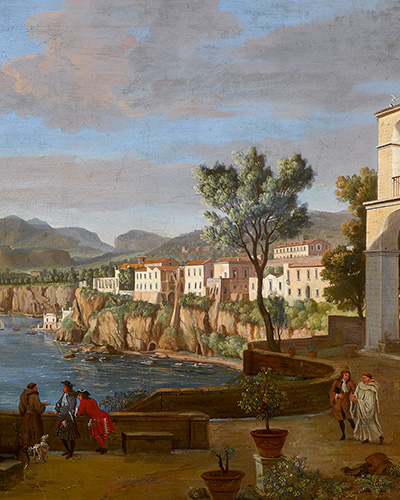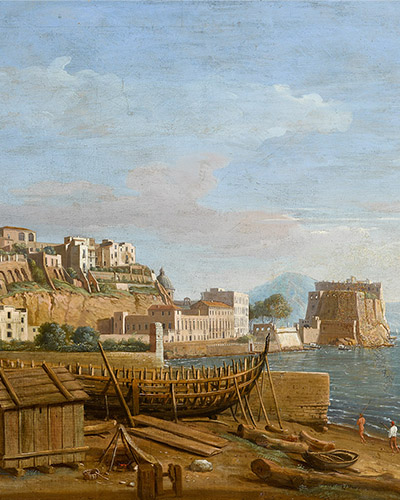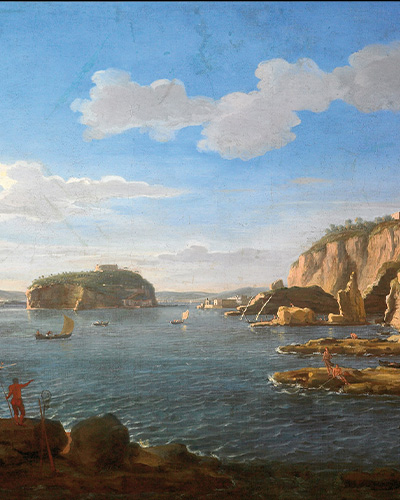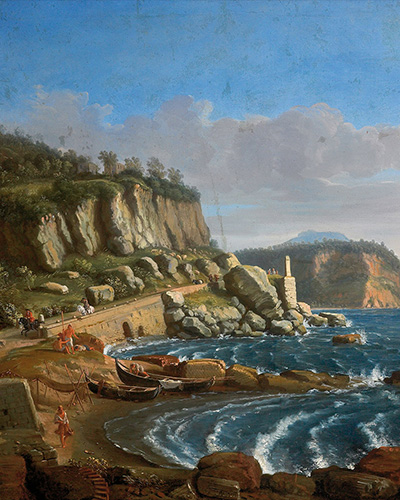Gaspar van Wittel was born around 1653 in Amesfoort. In nearby Utrecht he began painting as an apprentice in the workshop of Matthias Withoos, a painter of genre scenes. In 1674 he settled in Rome, where he worked for his compatriot Cornelius Meyer, a hydraulic engineer commissioned by Pope Clement X to study the navigability of the Tiber from Perugia to Rome, a project for which he produced fifty topographical drawings. This work marked his life and his position in the history of art, as he continued to paint his first urban views of the capital in Rome, where he became known as Vanvitelli and was nicknamed "Vanvitelli".Gaspare degli Occhiale"a double allusion to his vision problems and the need to wear glasses in order to execute the meticulous, almost miniaturist technique of his views.
His two main patrons were Luis Francisco de la Cerda (1660-1711), 9th Duke of Medinaceli, ambassador to Rome and viceroy of Naples, who collected at least thirty-five views of Italy, of which the Ducal House of Medinaceli Foundation has six, and Filippo II (1663-1714), Grand Constable of the Kingdom of Naples and Prince of Paliano, who continued the collection of Vanvitelli's views begun by his father, Lorenzo Onofrio (1637-1689), a collection that has not been dispersed as much as that of the former and which can still be seen in the Palazzo Colonna in Rome.
Having married the future viceroy's younger sister, Lorenza de la Cerda, in 1681, Philip II had been related to him long before his arrival in Italy in 1684 as captain-general of the Naples galleys, so it is unlikely that, as is generally assumed, he did not begin his relationship with Vanvitelli until his appointment as viceroy of Naples. It is much more likely that it was his brother-in-law who introduced him to the painter and that he started the collection in Rome and that it was enriched when, after a few years in the viceroyalty, he called the painter to entrust him with the task of portraying the most beautiful views of the Parthenopean city and kingdom, The beautification of the buildings must have been considered an almost family affair, not only because of his own contribution, but also because since his great-uncle, Pascual de Aragón, of the seven viceroys who had preceded him, all but one were his paternal or maternal uncles. In any case, the relationship between the painter and the 9th Duke became so close that Vanvitelli chose him as godfather at the baptism of his first-born son, baptising him with his own name, Luigi, a son who, in a certain sense, eclipsed his father's surname by developing a career in architecture that culminated in the great work of the Reggia di Caserta.
Gaspar Vanvitelli is considered the initiator of a new genre, Vedutism, an Italian term used to refer to a series of views, generally urban, painted in panoramic perspective, which today we would call photographic, and which reached its apogee in eighteenth-century Venice, Its modernity and novelty lay in the fact that the painter fused the technological innovations of the use of optical instruments to capture the reality of nature, which were widespread in Holland, with the Roman classicist spirit which, at the end of the 17th century, was seeking new ways to correct the excesses of the Baroque.






